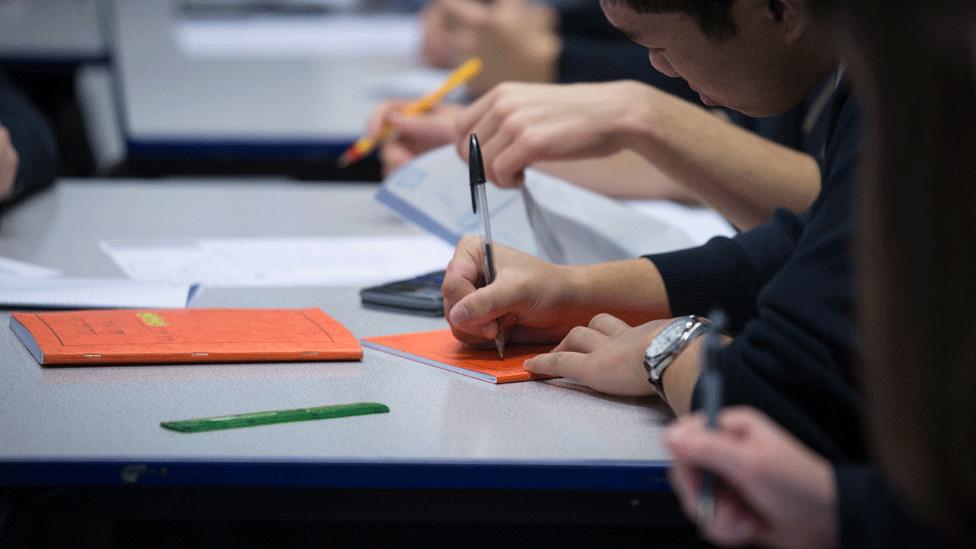Scottish schools data published for first time
- Published

Curriculum for Excellence levels improve in secondary school, statistics show
Data about how well schools in Scotland do on reading, writing and numeracy has been published for the first time.
But the Achievement of Curriculum for Excellence Levels information sets were made available with a warning.
The Scottish government said they required further development before their accuracy could be relied upon.
The statistics come as it was revealed that pupils do less well in reading, writing and numeracy through their primary years.
For example, in reading, 81% of P1 pupils achieved "Early Level", 75% of P4 pupils achieved "First Level" and 72% of P7 pupils achieved "Second Level".
However, the figures improve in secondary schools where the proportion of S3 pupils achieving Curriculum for Excellence Third Level or better is between 84% and 87% for each curriculum area which includes reading, writing, listening and talking, and numeracy.
ANALYSIS
By Jamie McIvor, ҙуПуҙ«ГҪ Scotland education correspondent
The data on Curriculum for Excellence attainment is being published for the first time.
Therefore it is impossible to say from these figures whether things are getting any better or worse.
The figures for S3 performance are bound to provoke some discussions.
The numbers reaching Level 3 - the basic level expected of an S3 student - are broadly in line with the number of primary school children reaching the levels expected of them.
But a relatively small proportion reach the more advanced Level 4.
Essentially this is a sign a youngster is academically able. It means that their work at the end of S3 would already be broadly equivalent to the standard required for a National 4 qualification.
The National 4 is the qualification, ordinarily obtained a year later in S4, by students who aren't studying for a National 5 or even a Higher. It is broadly equivalent to a General level pass in an old Standard Grade.
This may highlight a key challenge - ensuring youngsters continue to make progress in secondary school. Problems, for example, ensuring boys keep on making progress once they leave primary school have been well debated for many years.
Another issue with the Level 4 data is that there are significant differences in the data from different part of the countries.
The government says there are inconsistencies in the way young people are assessed in different areas.
It argues the planned standardised assessments will ensure a far greater degree of consistency.
- Published13 December 2016